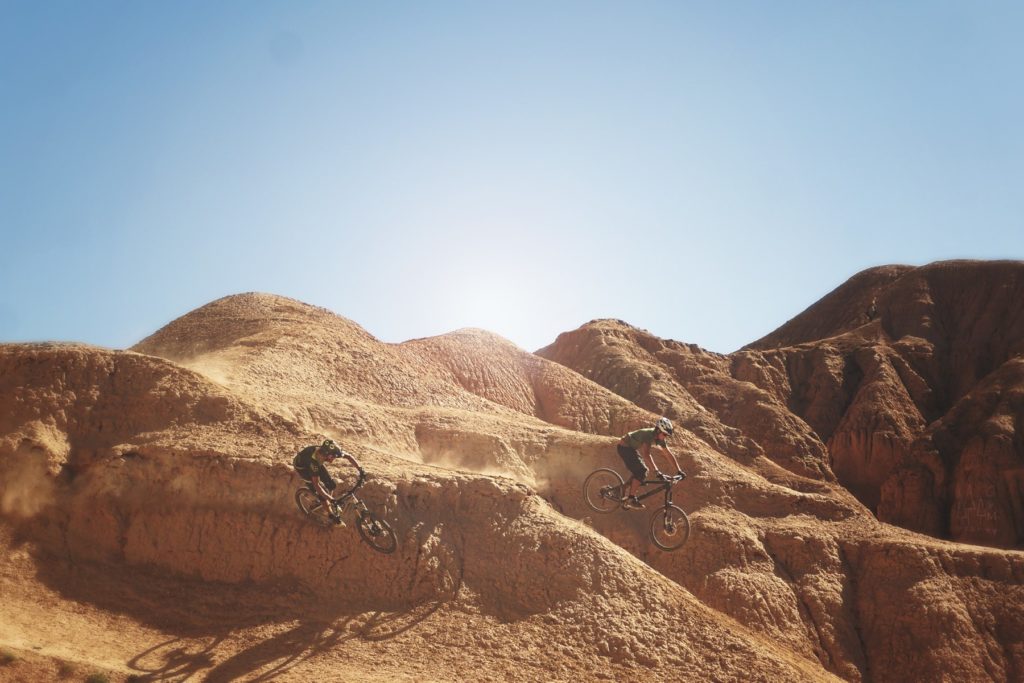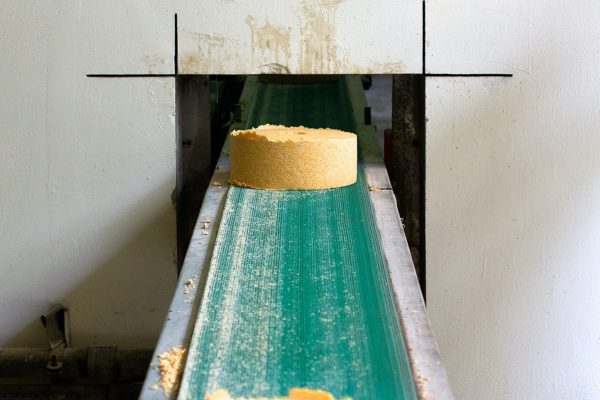Systematized: A look at mountain bike naming systems
Naming architecture and systems are top of mind as I’m wrapping up a large, multifaceted naming architecture project and spinning up on another this spring. As I’ve been completing this work, I’ve discovered how little information is readily available on how to evaluate and approach naming architectures and systems. For clarity on how we think about the two, take a look here.
While there’s some great work out there, it appears as if most of that thinking is still in the brains of the people who do this kind of work. So, I’m here to think out loud.
This piece will be the first in a series on naming architecture and systems. I’ll be looking at the lineups from a handful of brands in a specific industry and run the names through this series of questions:
• How is the portfolio breadth represented in names? How many product lines, products, and variants are named? How do they handle specific configurations, special editions, one-offs, and other outliers. Are outliers handled differently or the same?
• How do the names relate to products or offerings? Are the names descriptive, figurative, gestural, nonsensical, technical, hierarchical, generational, cyclical, or fall into some other category?
• What appears to be the goal of each system? Are they geared more towards wayfinding (help me find the right product) or are they an extension or expansion of the brand (intended to create emotional responses)?
• What’s the audience expectation around naming? Do most brands use similar naming systems or do they vary?
First up: mountain bikes. We’ll be looking at the offerings from Santa Cruz, Ibis, Yeti, Salsa, Transition, and Norco. My goal is to look at a mix of brands, some offering only mountain bikes, some with road and other options.

Santa Cruz
Santa Cruz offers mostly mountain bikes, the one gravel bike and one jumper are the exceptions. They split up the portfolio by wheel size, offering some of the same frame in different wheel sizes, e.g. the V10 comes in 27.5”. 29”, and a mixed size.
27.5″:
V10
Nomad
Heckler
Bronson
5010
29”:
V10
Megatower
Hightower
Tallboy
Blur
Highball
Chameleon
Mixed Wheels:
V10
Bullit
Heckler
700c / 650b / 26″:
Stigmata
Jackal
Ibis
Ibis offers mostly mountain bikes with one all-rounder that looks great for gravel and bikepacking. The AF designation seems to stand for Aluminum Frame, as the non-AF bikes use carbon. HD5 is a generation name.
Ripmo
Ripmo AF
Ripley
Ripley AF
Mojo HD5
Mojo
Hakka MX
Yeti
Mountain bikes only. The lineup is split between “Race” and “Rip.” Alphanumerics all the way down until the ARC, their only hardtail.
Race:
SB150
SB115
Rip:
SB165
SB140
SB130
ARC
ARC 35th
Salsa
Salsa offers all road, mountain, and fat bikes. Their only high-level variant is the Timberjack Kids. Like with all the manufacturers, when you dig deeper there are several configurations per product, e.g., Cassidy Carbon GX Eagle, Cassidy Carbon SLX, Cassidy SLX, Cassidy Carbon Frame, Cassidy Alloy Frame.
Mountain:
Cassidy
Blackthorn
Horsethief
Spearfish
Rustler
Timberjack
Timberjack Kids
Rangefinder
Transition
Spur
Scout
Sentinel
Patrol
TR11
Ripcord
PBJ
Norco
Norco has a big lineup that covers mountain, road, city, youth, and kids bikes
Mountain:
Aurum Aluminum
Aurum HSP
Bigfoot
Fluid FS
Fluid HT
Optic
Rampage
Revolver FS 100
Revolver FS 120
Revolver HT
Shore
Sight
Storm
Torrent
• How is the portfolio breadth represented in names? Most brands offer a relatively small number of products, an average of eight. This is a crowded space and I’m only looking at a small sliver. One piece that is consistent here and with some of the other brands not listed are that each model almost always comes in several configurations.
Just about everyone uses some kind of an alpha or alphanumeric system for configurations and often lists component brands for specific builds. Another common call-out is between carbon and aluminum builds. A couple of examples are the Transition Spur: Spur XG1, Spur GX, Spur Shimano Deore XT, Spur NX, Spur Frameset; and the Salsa Blackthorn: Blackthorn Carbon X01 Eagle, Blackthorn Carbon GX Eagle, Blackthorn Carbon SLX, Blackthorn SLX, Blackthorn Deore 12-Speed, Blackthorn Carbon Frame, Blackthorn Alloy Frame.
Special editions and outliers seem to be fairly rare, the exception here being the Yeti ARC 35th, an anniversary edition.
• How do the names relate to products or offerings? Most names are figurative and evocative, e.g., Mojo, Bigfoot, Chameleon. The outlier here is Yeti, being mostly locked into a technically-based alphanumeric structure, as the numerics indicate millimeters of rear travel, e.g., SB165 has 165mm of rear travel. Yeti’s only hardtail (no rear suspension) offering is ARC, so the split between alphanumeric and this offering is fairly clear. A few brands mix figurative naming with alphanumerics or numerics for unclear reasons: Santa Cruz with V10 and 5010, Transition with TR11. A small handful of hierarchical or similar relationships are being drawn at Santa Cruz with Megatower and Hightower, also maybe with Hightower and Highball (emphasis added).
• What appears to be the goals of each system? As the lion’s share of these names are evocative, most companies are looking to extend or expand their brand and create some emotional responses with their audiences. Most of these names call up strong, dynamic images and start to feel like brands unto themselves. This is pretty par for the course for the broader set of high price tag items in the mountain sports arena like skis, snowboards, and backpacking tents.
• What’s the audience expectation around naming? At first glance, and with the exception of Yeti, if the brand names were removed from the above list and the list randomized—I couldn’t really tell you which name belongs to which brand. They’re all roughly cut from the same cloth. That points to an expectation around evocative, imagery-based naming that feels dynamic and alive. Drilling down beyond product names there is an expectation to quickly understand build specs with alphanumerics, component call-outs, and whether or not a carbon frame is offered.
Thanks for joining, see you next time.

